Sometimes you don’t have to jump on the bandwagon of modernity. You can decide to do things the way our ancestors were doing. One way of living this kind of life is by trying out traditional archery. This form of archery has been around for thousands of years, and the survival of human beings depended on it. Bows and arrows were used to hunt food, provide protection and for recreation purposes. Experienced archers tend to have a soft spot for traditional archery because of the severe challenges that one has to go through to master it. Traditional archery often ends up producing expert archers.
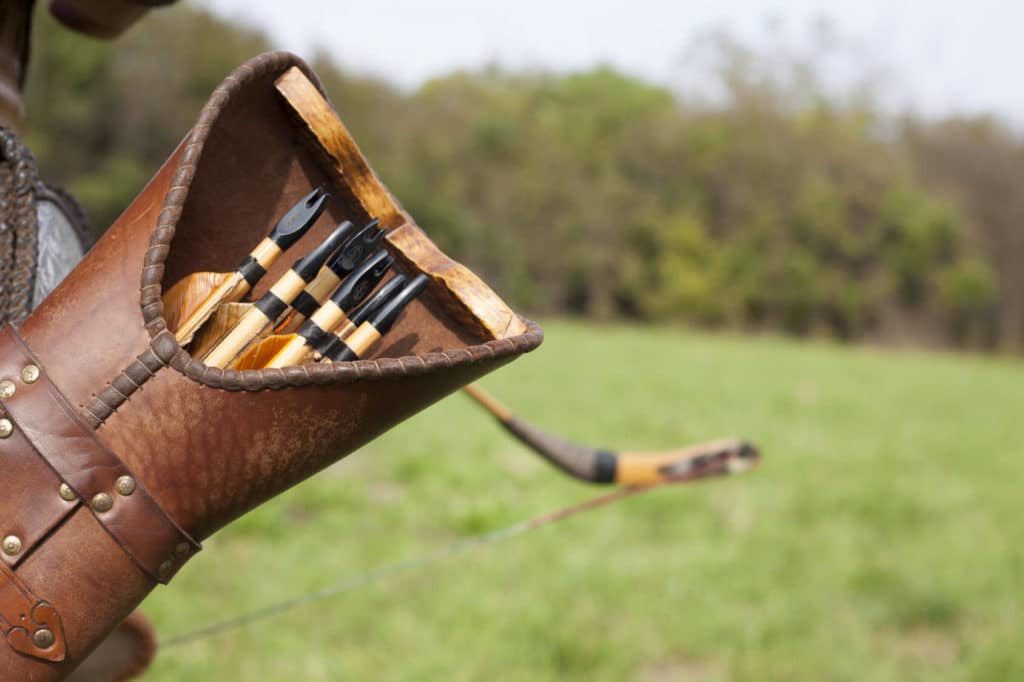
Table of Contents
Tools used in traditional archery
Simple tools characterized traditional archery. Our ancestors did not have lots of high-tech accessories such as sights, stabilizers, or cams that the modern tools such as compound bows have. Traditional bows are also shot without any release aid, so you are relying on your fingers only. This means that you have to put in lots of effort before you could count yourself successful. Here are the essential tools that are used in traditional archery.
Bow
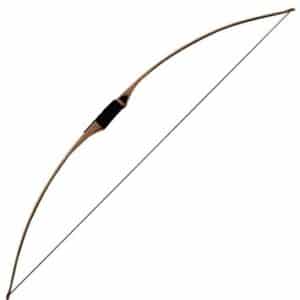
As expected, archery cannot be complete without a bow. The bows in traditional archery come in different sizes and designs. There are two models of bows in this type of archery: the recurve bow and the longbow, though they can be further divided into smaller sub-categories.
The SAS Pioneer traditional longbow
A longbow can be straight, or have a certain degree of reflex in its design, but it typically features one single curve in its design, that stretches from one end of the bow to another. It is typically D-shaped when not stretched.
We have put together a comprehensive guide on longbow styles, and how to choose the best longbow for you.
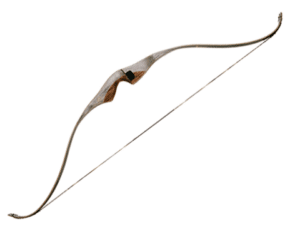
Recurve bow limbs are designed to have more than one curve. This makes a recurve bow more elastic when pulled back hence giving it some extra power and force.
The Bear Cheyenne recurve bow
Much like in modern archery, in traditional archery, the quality of the arrow used to matter. Regardless of the type of bow, using a substandard arrow would make the job difficult. The arrow should be able to take a good flight so that the archer can hit the target with high levels of accuracy.
Arrows

Arrows used in traditional archery were made of straight shafts of wood, a nock which is responsible for supporting the arrow on the string of the bow, fletching which streamlines and stabilizes the flight of the arrow and arrow point which hits the target. The fletching of a traditional arrow is made of wing feathers.
In picture: traditional archery arrows by Huntingdoor
Armguard
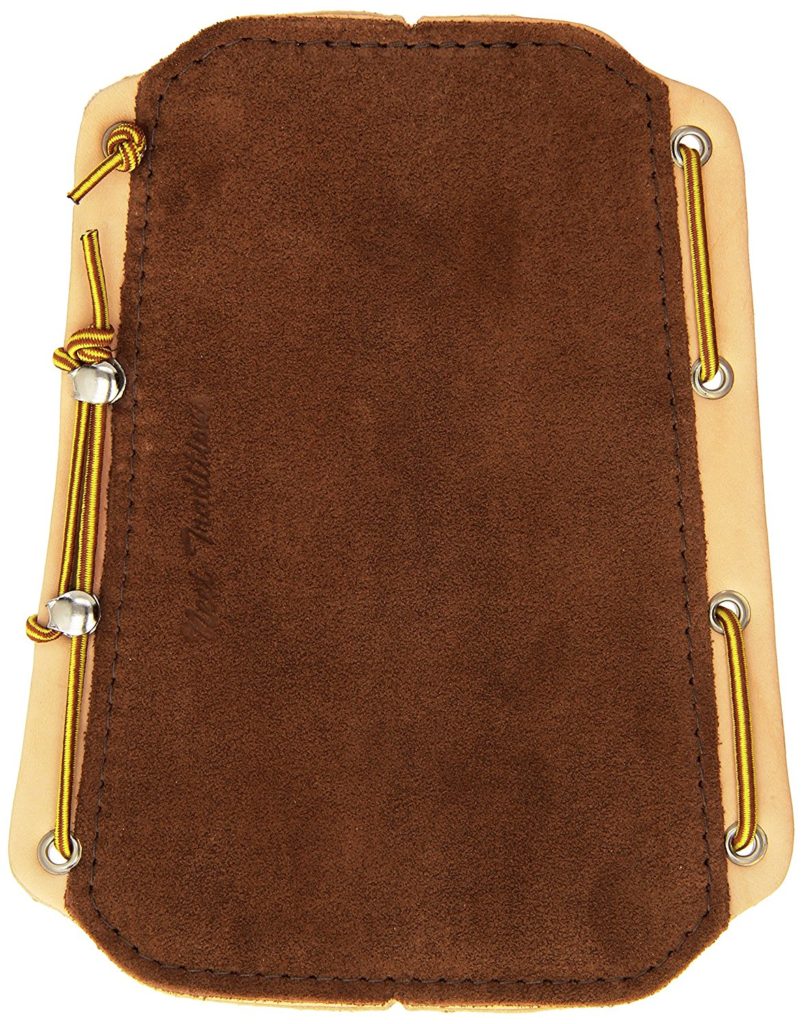
The armguards play a protection role. They shield the forearm from the impact produced by the string of the bow once it has been released. It may not be that essential, but it can help to ensure that your archery goes on smoothly. The armguards prevent the clothing that is in the forearm from getting into a direct contact with the string.
Neet TAGL Traditional Arm Guard
Quiver

One arrow will never be enough. You need to carry several of them. The main role of a quiver in the traditional archery is to store extra arrows. It ensures that an archer remains comfortable especially when the arrow has sharp broadheads. It provides ultimate protection when the arrow is not in use. Quivers come in different forms depending on how an archer would like to carry it. There are side quivers which hang on the archers’ side while back quivers are worn in a similar manner to single strap backpacks. Bow quivers attach themselves to the bow.
Traditional handmade arrow quiver by ArcheryMax
Shooting glove

In picture: hand guard shooting glove by XTACER.
To deal with the pressure that the string exerts on the fingers, archers use shooting glove or tab. The suppression of pressure would result in a painless process and increase the accuracy at which the arrow is released.
These are just some of the basic tools that make up traditional archery. They differ in quality and functionality. The choice of a tool will depend on the intended purpose and the user’s personal taste.
Differences between traditional archery and modern archery
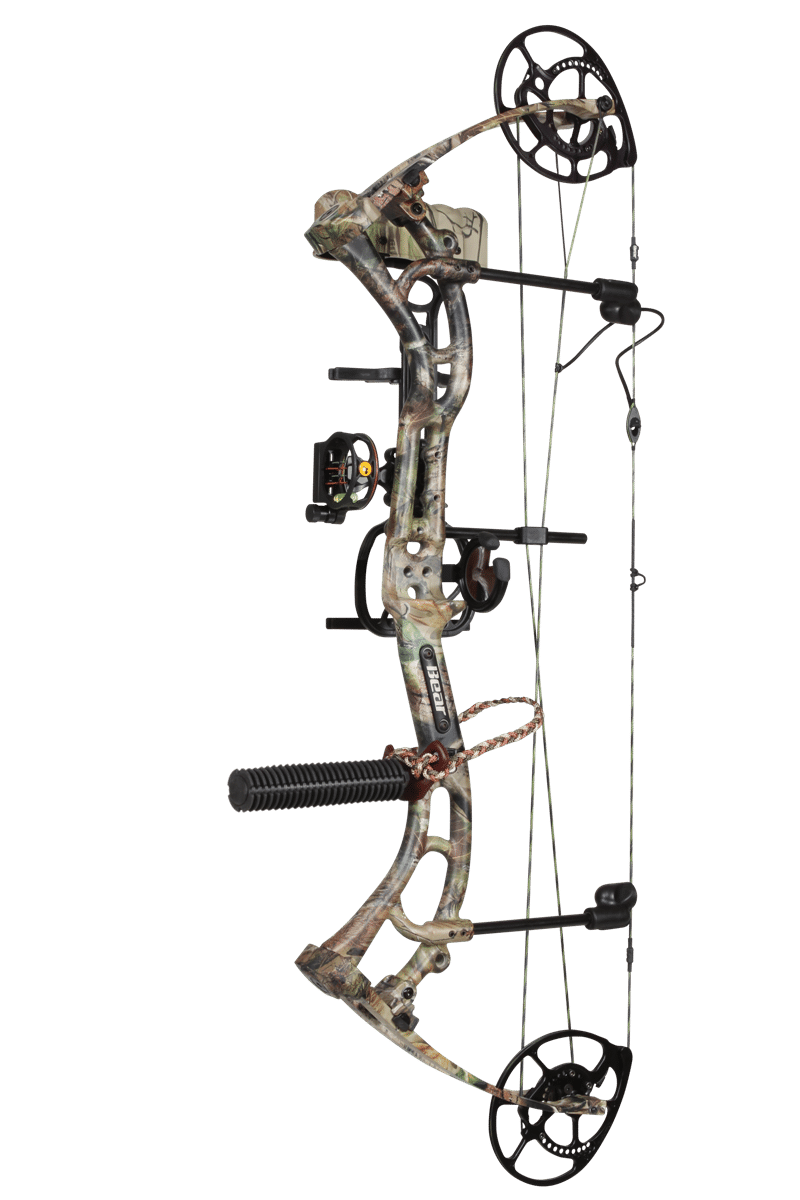
Just because it is traditional does not mean that it is worse or archaic. It only means that the archery is done using different techniques. Unlike modern archery which involves heavy use of modern gadgets such as cams, stabilizers, releases among others, there are no shooting aids in the traditional method. Traditional archery fully depends on the skills and experience of an archer. The archer will aim at the target knowing very well that there is no any form of external help that may be coming anytime soon.
When using the modern bow, an archer only needs to take care of the sense of sight. With the help of an electronic rangefinder, the archer should be able to determine the distance to the target accurately. This is because the sight pins on the bow may not be the actual representation of the distance to the target. This is why modern bows require one to align proper pin accurately. Modern bows also call for high levels of accuracy on the way that you align the bow. You can’t handle it at any angle, but instead, it should be almost perpendicular to the ground.
Traditional bows don’t have a fixed angle at which they should be aligned. An archer can align it at any angle. It will be up to the archer to calculate the best angle at which the bow should be held so as to increase the accuracy level. This is done while keeping in mind the distance between the bow and the target.
Another feature about the modern bow that is not in the traditional bow is modern bow give room for an extra draw which is popularly known as the let-off. You only need some little effort to bring it to the maximum level. The amount of pressure that you will use to attain an extra draw is the same as that will be used to accomplish a full draw.
Fine-tuning traditional archery
Traditional bows also need to be perfectly tuned so as to achieve an accurate shot. Once an arrow has been well tuned, it will be able to make a smooth flight which and an archer will also use less effort to shoot even when the target is some distance away. Given that the tools used are traditional, one method of tuning is through trial and error. This involves tweaking the brace height and the nocking point location. Brace height is the distance between the handle and the string. An archer should continue changing this distance till a perfect point is attained. Another method of tuning the bow is by changing the thickness of the strike plate.
Shooting in traditional archery
Once an archer has attained a perfect arrow/bow point, the next step will be to take a shot. The accuracy of the shooting may depend on how you position your fingers. Grip the bowstring into a perfect position then let the rest of the hand to do the drawing and the anchoring. Hold the string at a full draw using back muscles. Tilt the bow until your eyes are directly above the arrow. Let your eyes create an exact spot where you want to hit, and your mind should have a full concentration of the target. Given that traditional bows are a bit slower, any movement of the bow arm before shooting can negatively impact on the accuracy of the arrow.
More traditional archery articles
Love traditional archery? Check out more popular traditional archery articles below. Oh, and don’t forget to subscribe to our newsletter to never miss on the next guides and the best deals!
Did You Enjoy This Archery Blog Article?
We hope you enjoyed reading this archery blog article and that you found it useful. If you have any suggestions or comments, do not hesitate to get in touch.
If you liked this archery blog article, why not share it on your social media to let your friends and fellow archers know!



Go trad archery or go home 🙂